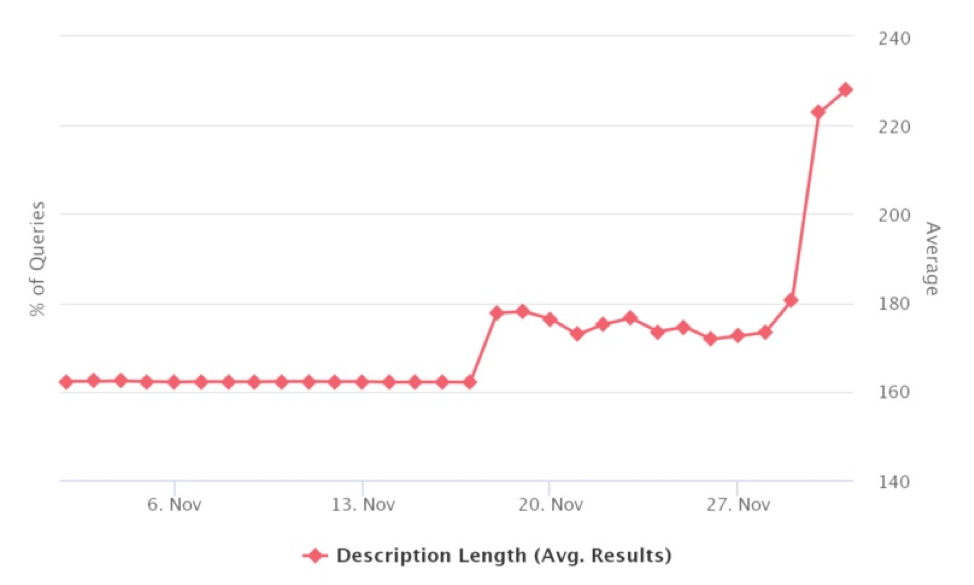Meta descriptions don’t always get the attention they should from marketers. But these snippets have a huge impact on both the quantity and quality of traffic you’re bringing in from SERPs. Well-written meta descriptions can bring you a steady stream of qualified leads, while bad ones will decrease your organic traffic and drive your bounce rate up. Here’s how you can make your meta descriptions shine.
-
Stop Letting Google Generate Your Meta Descriptions
You don’t have to write your own meta descriptions at all. If you don’t provide one, search engines will pull content from your page to create one for you. But this auto-generated snippets are almost never as well-crafted and effective as meta descriptions that you write yourself. Stop leaving your snippets up to fate (and Google), and you’ll probably see an improvement in your click-through rates.
Above is an example of an auto-generated meta description. How would you improve it?
-
Start with Your Biggest Pages
If you know your meta descriptions need work, start by updating the ones on your site’s most important pages. Your homepage, services page, and any other major landing pages are good bets. Writing dozens of meta descriptions at a time can get a bit mind-numbing, so go for the ones with the biggest payoff first, and tackle the others as your time and energy allows.
-
Make Each Meta Description Unique
Google doesn’t like duplicate content, and that goes for meta descriptions as well as the actual content on your site. If you’ve been copy-pasting the same meta description on multiple pages of your site, Google is likely to ignore all of them and generate different snippets for your pages in SERPs. Reclaim that space for yourself by reworking your meta descriptions to be unique.
-
Include Keywords
Keywords are as important in your meta descriptions as they are everywhere else. Do your best to fit the main keywords for each of your site’s pages into the meta description for that page. Google is more likely to use your description if it contains a keyword that matches a searcher’s query, and including relevant keywords also helps you snag searchers’ eyes in SERPs. Just be careful not to step over the line into keyword stuffing. It’s 2018, and we all know better.
-
Think Like a Searcher
People use search engines when they have questions they want answered or problems they’d like to solve. What kind of questions or problems might bring searchers to your site? Address these issues directly in your meta description. One possible tactic to try: Start your meta description by asking a question, and then promise searchers an answer if they click on your page. Make searchers feel like you understand their problem and have a ready solution for them.
-
Use Vivid Words
A boring, unmemorable meta description doesn’t make a very effective sales pitch for your website. Put some effort into your word choice and phrasing. Use strong action verbs, concrete nouns, and words that evoke an emotional response in the reader.
-
Add Some Length
You might have more wiggle room in your meta descriptions than you realize. In the past, the unofficial recommendation was to stick to 155 characters or fewer, so that the snippet wouldn’t get truncated. At the end of 2017, though, Google started showing longer and more detailed snippets — often up to 230 characters — in their search results.
Google’s average meta description length has increased over time. Source
The way Google calculates meta description length is still shrouded in mystery, like most other aspects of their algorithm, and there’s no guarantee that they won’t return to displaying shorter descriptions in the future. For now, though, it can’t hurt to take advantage of the extra real estate in SERPs by adding more details or selling points to your meta descriptions.
-
Include Structured Data
The more information you can fit into your meta description, the better. One of the best ways to do this is to add structured data to your site’s pages. Schema markup is most commonly used to do this. Structured data — like publication date, author name, rating, and price, among other tidbits of info — can make your meta descriptions look more complete, organized, and professional in SERPs.
TripAdvisor uses structured data to give searchers at-a-glance information in search results.
-
Add a Call to Action
You wouldn’t forget to include a call to action on a landing page or in an email, but what about in your meta descriptions? Since you’re trying to get searchers to do something (in this case, click through to your site), you’ll get better results if you actually ask them to do it. Try writing something like “Learn more,” “Buy it today,” or “Start your free trial now” at the end of your meta description
Wrapping Up
Creating meta descriptions is a challenging form of copywriting, since you have only a small space to make an impression on searchers. But it’s also one of the most important skills you can gain as a marketer. With these tips, plus some practice and experience, you’ll soon be writing meta descriptions that draw traffic to your site like a magnet.
What are your best tips for writing effective meta descriptions?
Feature Image Credit: kickpoint.com




